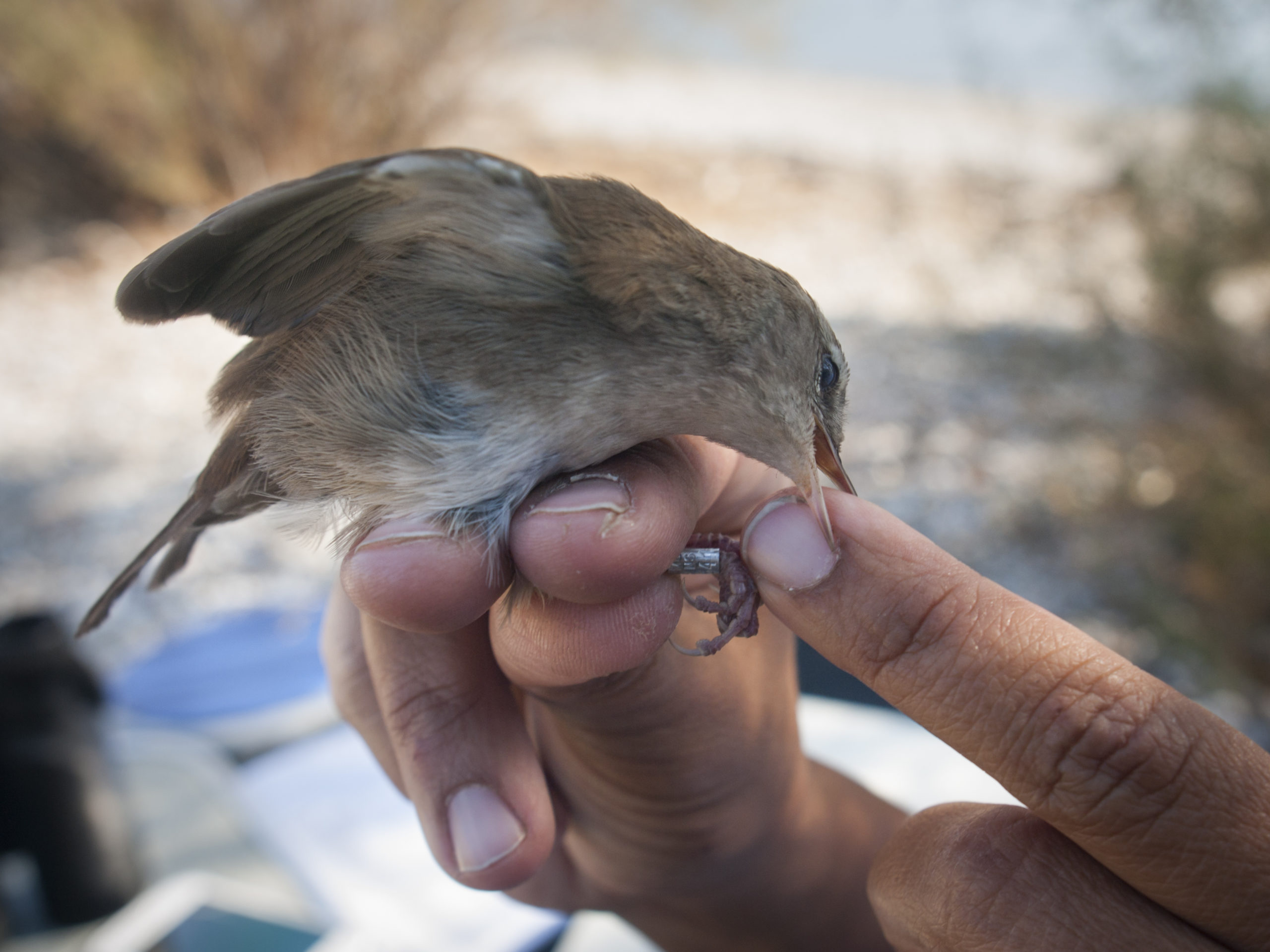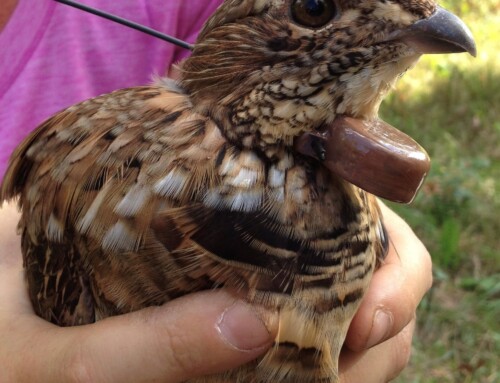LINKED PAPER
Body temperature responses of Great Tits Parus major to handling in the cold. Andreasson, F., Nord, A., & Nilson, J.-A. 2020. IBIS. DOI: 10.1111/ibi.12737 VIEW
In 1899, the Danish school teacher Hans Christian Cornelius Mortensen put aluminum rings on European Starlings (Sturnus vulgaris) to track their movements (Preuss 2001). This experiment can be regarded as the first use of modern bird ringing techniques in Europe. The consequent development and study of bird ringing has led to important insights in bird migration and behavior. The advantages of catching and ringing birds are obvious to professional ornithologists and bird enthusiasts, but the general public often reacts skeptically. Doesn’t this cause a lot of stress to the birds? Indeed, you might expect that handling birds triggers a fight-or-flight response: heart rate spikes, blood is pumped to the muscles and body temperature increases. However, a recent study on Great Tits (Parus major) challenged this expectation. It turns out that body temperature actually decreases during handling and even continues to drop after release.
Body temperature
During the winter evenings of 2015, Frederik Andreasson and his colleagues were catching Great Tits in the south of Sweden. After noting down standard information about the birds – such as sex, age and several morphological measurements – the researchers inserted a temperature-logger into their cloaca. The birds were then released into their nest boxes and left overnight. The data from this procedure revealed that the birds’ temperature dropped by an average of 2.3°C during handling. Once in the nest box, the body temperature continued to decrease by about 1°C per minute. After a minimum temperature of 35°C, the birds took roughly 20 minutes to reach a maximum body temperature of ca. 41°C.
Figure 1 Changes in body temperature of Great Tits after being handled. The four timepoints correspond to different phases during the procedure, namely catching the bird (T1), after handling (T2), minimum temperature in the nest box (T3) and maximum temperature in the nest box (T4).
Plumage insulation
A similar temperature trajectory in Black-capped Chickadees (Poecile atricapillus) was attributed to the disruption of plumage insulation and conducive cooling from cold hands (Lewden et al. 2017). In addition, the birds might exhibit an anti-predator response in which they ‘freeze’ and lower their heart rate after being handled (so-called tonic immobility, Gabrielsen & Smith 1985, Hohtola 1981). The drop in body temperature and the consequent energy needed to warm up during the night could have negative effects on the birds (Brodin et al. 2017). It is thus important to keep this in mind when catching and ringing birds. If possible, one should handle the birds inside where the drop in body temperature is less severe (Lewden et al. 2017). And if handling in cold environments is unavoidable, the time handling birds should be minimized. These precautions will allow ornithologists to gather important information on bird migration and behavior, while safeguarding the health and stress levels of the birds.
References
Brodin, A., Nilsson, J.‐Å. & Nord, A. (2017). Adaptive temperature regulation in the little bird in winter: predictions from a stochastic dynamic programming model. Oecologia 185: 43– 54. VIEW
Gabrielsen, G.W. & Smith, E.N. (1985). Physiological responses associated with feigned death in the American opossum. Acta Physiologica Scandinavica 123: 393– 398. VIEW
Hohtola, E. (1981). Tonic immobility and shivering in birds: evolutionary implications. Physiology & Behavior 27: 475– 480. VIEW
Lewden, A., Nord, A., Petit, M. & Vézina, F.( 2017). Body temperature responses to handling stress in wintering Black‐capped Chickadees (Poecile atricapillus L.). Physiology & Behavior 179: 49– 54. VIEW
Preuss, N. (2001). Hans Christian Cornelius Mortensen: aspects of his life and of the history of bird ringing. Ardea 89: 1-6. VIEW
Image credits
Top right: Ringing birds in Greece | Petsikos | CC BY-SA 4.0 Wikimedia Commons
Blog posts express the views of the individual author(s) and not those of the BOU.
If you want to write about your research in #theBOUblog, then please see here.





